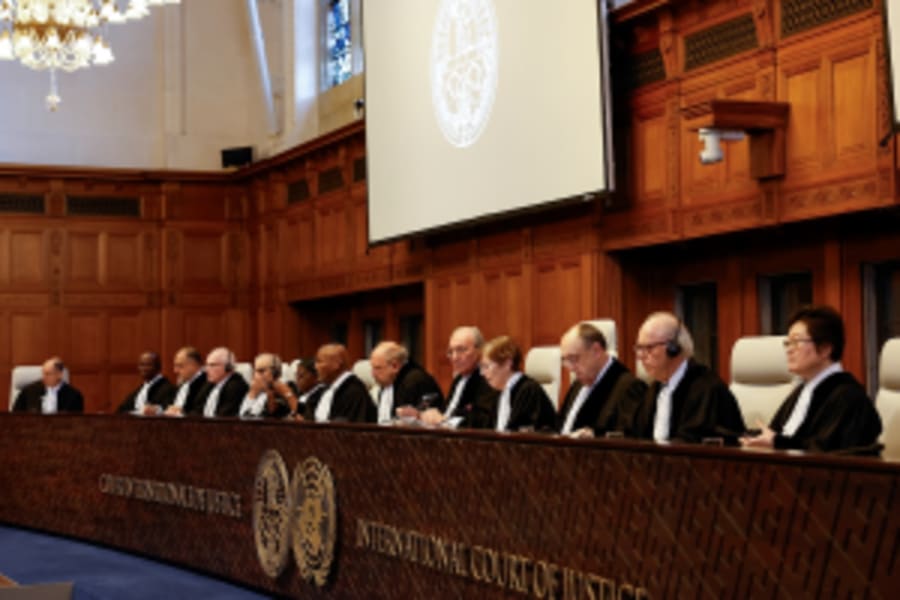Is Israel preparing to transition towns into 15-minute cities?

It took a weekend trip, to the north of Israel to discover, from a friend who lives up there, that my own hometown of Bat Yam, just 7 kilometers from Tel Aviv, will be divided into five districts this week.
Promoted as a way to “improve the appearance of the city, facilitate more efficient service for residents and provide better maintenance and cleanliness, it’s hard to comprehend how the creation of five different districts can revolutionize a city which already enjoys a reputation of being well-run by most standards.
The announcement goes on to promise, “full synchronization that will lead to the utilization of resources and budget efficiency, all while increasing dialogue and the service provided to the residents of the city.” (Is anyone able to translate into simple English what that really means?) In addition, they have promised that these changes will “revolutionize us, turning Bat Yam into a progressive city with better service for our wonderful residents.”
Sounds great, right? Who wouldn’t want an improved, cleaner, more efficient neighborhood? But suppose it’s only a subterfuge – a deceitful plan in order to cunningly accomplish the real goal? It’s not so far-fetched, these days, to see that when ideas are floated, it’s usually only the beginning of a larger agenda which, if introduced in a straightforward and transparent manner, would likely be roundly rejected by the public because it’s just too radical for them.
Such is the plan called, “The 15-minute city,” introduced by the WEF (World Economic Forum) which aspires to keep (hold hostage) each person within a 15-minute radius of their dwelling. This area would include access to shopping, schooling, medical clinics, a variety of other services and, most of all, the ability to live without your own car.
You can preview exactly how all of this will work on the WEF website which starts out by saying that everything you need will be within a 15-minute radius on foot or bike. The aim, of course, is to cut car use, resulting in fewer CO2 emissions, with the result being cleaner air. So, the goal of fewer or no cars on the road is not even hidden by them. The enticement is to build beautiful grassy spaces by alleviating existing parking spots. Melbourne, Milan and Paris are three cities which have already experimented with this plan.
Naturally, all of this is being done in the name of climate change and global conflict (per their bullet points) but even if if were necessary to eradicate pollution, which will never entirely happen since the largest polluting nations are not on board, the end result is still the same. No one will be able to leave their assigned district when they want in order to go where they want.
Of course, the first step in implementing such a plan would be to define specific areas or districts, all within a radius of 15-minutes to whatever is needed by residents. In September 2022, the Times of Israel wrote, “Many new developments are being built with sustainability, public transportation links and green space in mind. Haifa, Beer Sheva, Tel Aviv and Central Jerusalem are working hard to try to deliver on the concept, at least in part, directing much new construction in ways that integrate it into the existing city while avoiding sprawling single-use developments.”
Translation - this appears to already be in the works. Now, the idea has spilled over to Bat Yam, and while the city does enjoy one of the most beautiful coastlines in Israel, it also lacks upscale restaurants, museums, nightlife and the theatre of Tel Aviv – not to mention the enormous nature parks, waterfalls and hiking trails, which are plentiful in both the north and the south of the country.
But while all this urban planning has been taking place, it hasn’t been lost on our local population that any morning can bring one less travel lane on the local service roads, which, unbeknownst to us, went from three lanes to two, sometime in the wee hours of the morning. Over the last year, this phenomenon has been happening more and more, sending the clear message that driving will be less convenient and public transportation will be the preferred means of travel.
While that may work for the occasional trip into another city, it remains very impractical for longer trips or a way of life which most people have known since birth and are not so keen on changing, simply because the World Economic Forum or global elites have decided that the world’s population can no longer live as they have.
Of course, no one has any doubts that those same “world managers” will continue to fly in their private jets, whenever and to wherever they want. It is only the rest of us who will have to adapt to a new way of life – one which will allow for much less freedom of mobility and personal choice.
In the meantime, it wouldn’t be odd to come to some obvious conclusions, after doing a few mental calculations, as to why our municipality suddenly feels the urgency to split up our city into five districts, attempting to justify how great it will be for residents.
Not to ask the question is to actually accept, at face value, what appears to be a clever public relations spin, aimed at getting everyone on board, and while many may not suspect a hidden agenda behind the multitude of reasons given, trusting politicians and government is done at one’s own peril.
If we have learned anything from the past three years, it’s that government still does not trump the private sector when it comes to efficiency, innovation, speed and relying upon proven and accurate information. Bureaucracy, rather, tends to be politically motivated by individuals who stand to gain something in return, and that 'something' generally translates into power, influence and money.
So, for now, if there is a bit of suspicion as to what is happening in some of Israel’s cities, as it concerns the defining of districts, it may be entirely justified - given the obvious trend we are seeing - to limit and control movement by forcing us to adapt to less freedom (which is systematically being taken away from us by those who want radical change as soon as possible).
The interesting thing will be to see how Israelis, who adore traveling both abroad and within their country, react to limitations placed on them, if that is truly the end result of what appears to be calculated preparations for the 15-minute city of the WEF.

A former Jerusalem elementary and middle-school principal who made Aliyah in 1993 and became a member of Kibbutz Reim but now lives in the center of the country with her husband. She is the author of Mistake-Proof Parenting, based on the principles from the book of Proverbs - available on Amazon.














